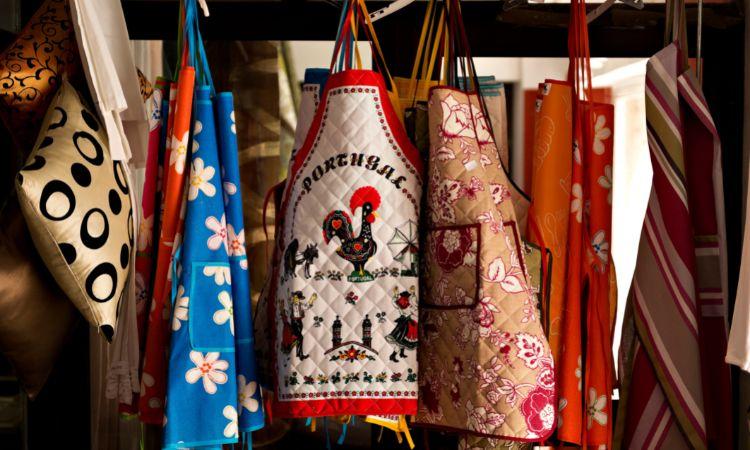5 types of apron fabrics
Posted 2022-12-05 09:00:21
0
3K

When you purchase their linen tablecloths and other restaurant supplies, some businesses give out thin cotton aprons as a gift. The bad news is that those suppliers to restaurants do not offer them in various sizes. When the chef is larger than typical, an apron that is one size fits all is not suitable. However, this does not imply that cotton is a poor choice for aprons. The cotton that is thicker in weight will still make an excellent fabric to utilize.
The other materials you can employ will depend on all the responsibilities your chef has.
If there is a lot of water spraying in the kitchen or if sauces splash up and go on the cook, rubber or nylon materials are preferable. You can use leather for various tasks because it is a durable material that prevents heat from entering the body and lasts a long time. In situations where sparks are flying, it makes a good shield.
The most common textiles for use are cotton and muslin, however their inability to repel water restricts the use of the apron. Denim and linen would be two other options. They appear to possess qualities that other fabrics lack, making them the ideal choice for use in the kitchen or in front of the barbecue.
5 types of apron fabrics
This will largely depend on the tasks you must complete while donning the apron. However, when one is baking or working with a lot of dry materials, cotton or muslin frequently stands out. Since there is less mess to clean up and cooking doesn’t take eight to ten hours each time, cotton is also acceptable in the home kitchen.
You might want to think about keeping a leather apron on hand as a backup when dealing with flames or materials that spark frequently. Cotton is not useful when the heat is too high or to protect you from either cooking hazard.
Again, you can substitute denim or linen cloth for the cotton. You not only receive additional heat protection, but you also receive an apron that will last you for many years. Although less common than cotton, linen and denim are both durable textiles that are undoubtedly superior. But if you need to operate with a lot of liquids, those two textiles will only be of limited utility. When dealing with wet components, a nylon apron is preferable even though the two fabrics can both absorb a lot of moisture from spills.
Cotton Fabric for Aprons
When someone mentions apron-making or the fabric to use, everyone typically immediately thinks of this. Most of the time, cotton is lightweight and easier to sew with.
Additionally, it can bring up memories of your mother or grandmother cooking meals for their families. When people think back on their formative years, cotton typically makes them feel happy because of its cozy, down-home vibe. The beautiful thing about cotton is that it does come in many weights, so you are not restricted to constructing those frilly, lace-filled, housewife-appropriate aprons. When you prefer the feel of cotton to that of other fibers, you have options, and having options is always a good thing.
Cotton is not water-resistant or waterproof, which is the only disadvantage of using it for aprons. Other than that, there are no restrictions on how you can use this fabric to make stunning sewing creations.
Best Fabric for Chef Aprons
The best fabric might not have a well-known name like cotton, leather, nylon, rubber, or denim, but it might have the best qualities. The best fabric for a chef’s apron may be one that satisfies the following requirements:
The cloth needs to be roughly 240 grams in weight. The best spill defense appears to be provided by this weight.
When employing a polyester cotton blend fabric, a high poly content is preferred. The best protection is provided by the 65/35% split, with poly being the greater fabric.
A material that resists stains effectively. You want a fabric that is easy to wash and can remove stains since cotton is soft but it also stains too easily.
One technique to meet the need for strength is to have a fabric that allows for the addition of ties to increase strength.
The chef moves around a lot and occasionally bends in some of the most difficult postures, thus reinforced seams are a crucial feature. You want a fabric of chef’s apron that allows you to strengthen the seams to fend off splits and tears.
Read more — https://rpcomtrade.com/5-types-of-apron-fabrics/
Cerca
Categorie
- Art
- Causes
- Crafts
- Dance
- Drinks
- Film
- Fitness
- Food
- Giochi
- Gardening
- Health
- Home
- Literature
- Music
- Networking
- Altre informazioni
- Party
- Religion
- Shopping
- Sports
- Theater
- Wellness
- IT, Cloud, Software and Technology
Leggi tutto
Best High-Speed SSD Packages by BTO Brands
When it comes to getting the best value from a personal computer, many users in Japan and around...
Maximize Your Squad's Potential: A Complete Guide to Earning and Using FIFA Ultimate Team Coins in FC 26
Maximize Your Squad's Potential: A Complete Guide to Earning and Using FIFA Ultimate Team Coins...
Market Is Estimated To Witness High Growth Owing To Increased Adoption Of Smart Cities & Rising Demand For Contactless Deliveries
The Autonomous Delivery Robots Market is estimated to be valued at Us$ 0.52 Mn in 2021 and is...
Exploring the Versatility of BMK Glycidate
BMK glycidate, also recognized as alpha-Phenylacetoacetonitrile (BMK), has attracted significant...
Display Glass Anti-Fingerprint Coating Market In-depth Analysis Research Report 2028
Exactitude Consultancy has recently published a research study on Display Glass Anti-Fingerprint...


